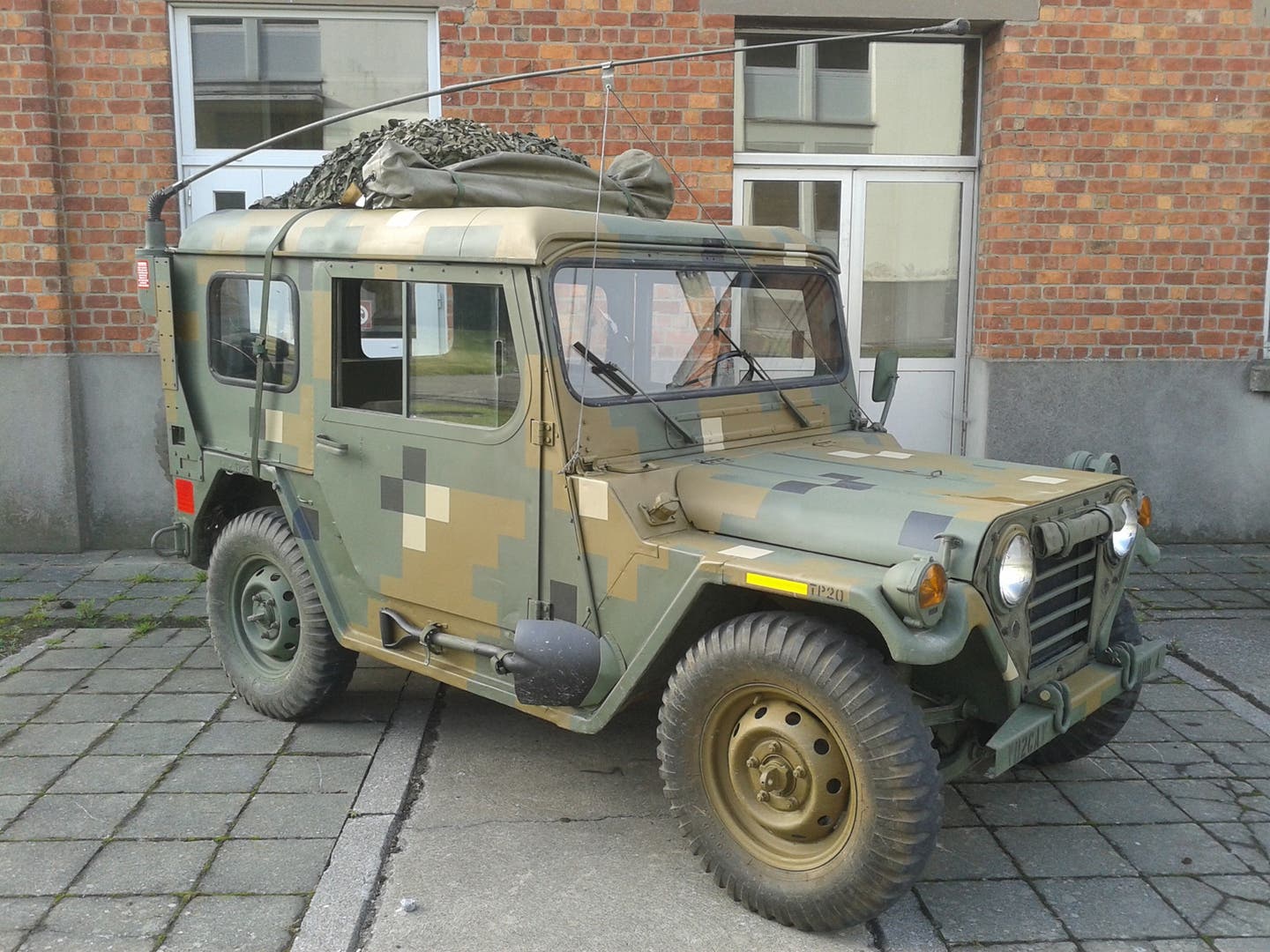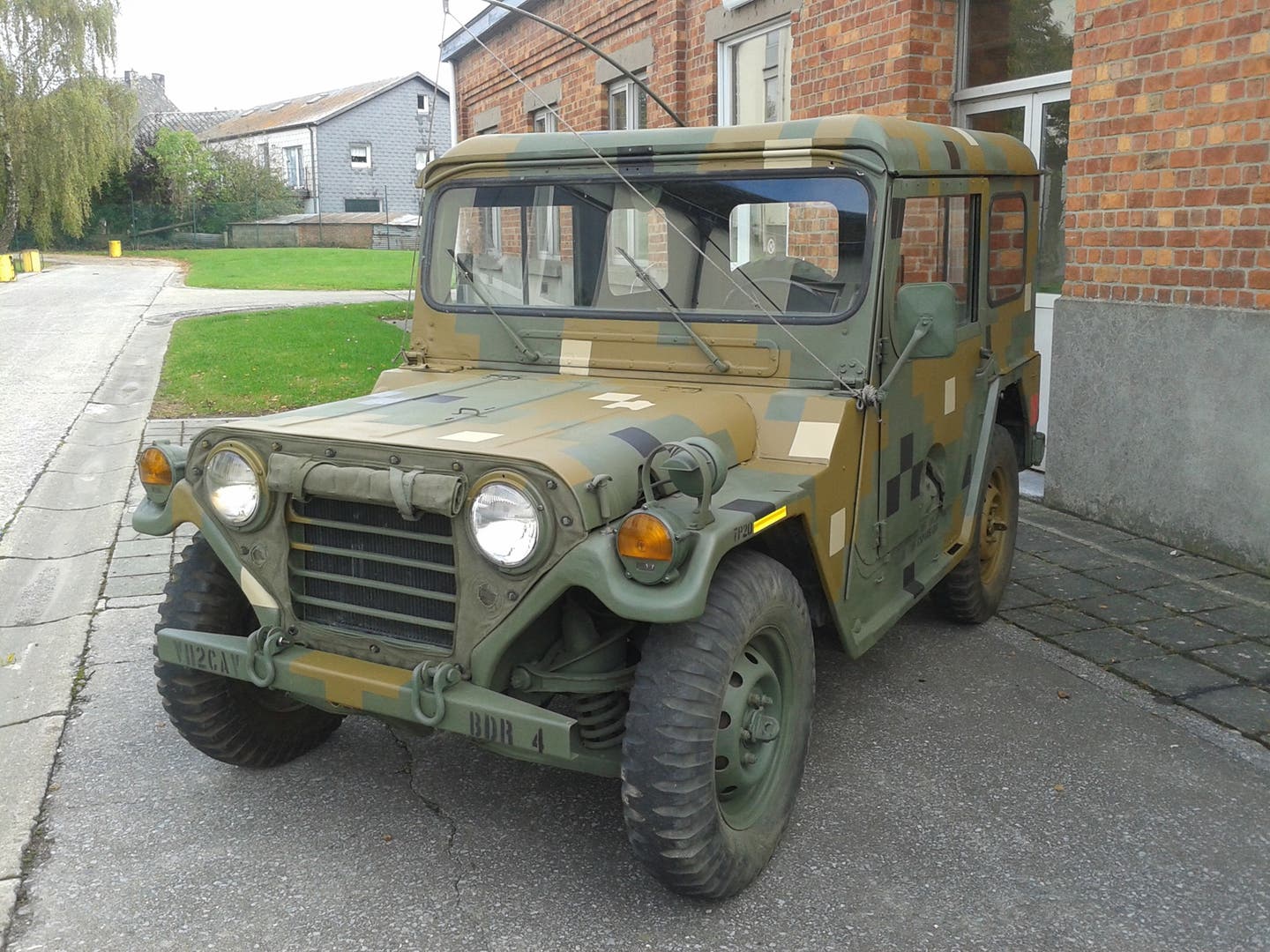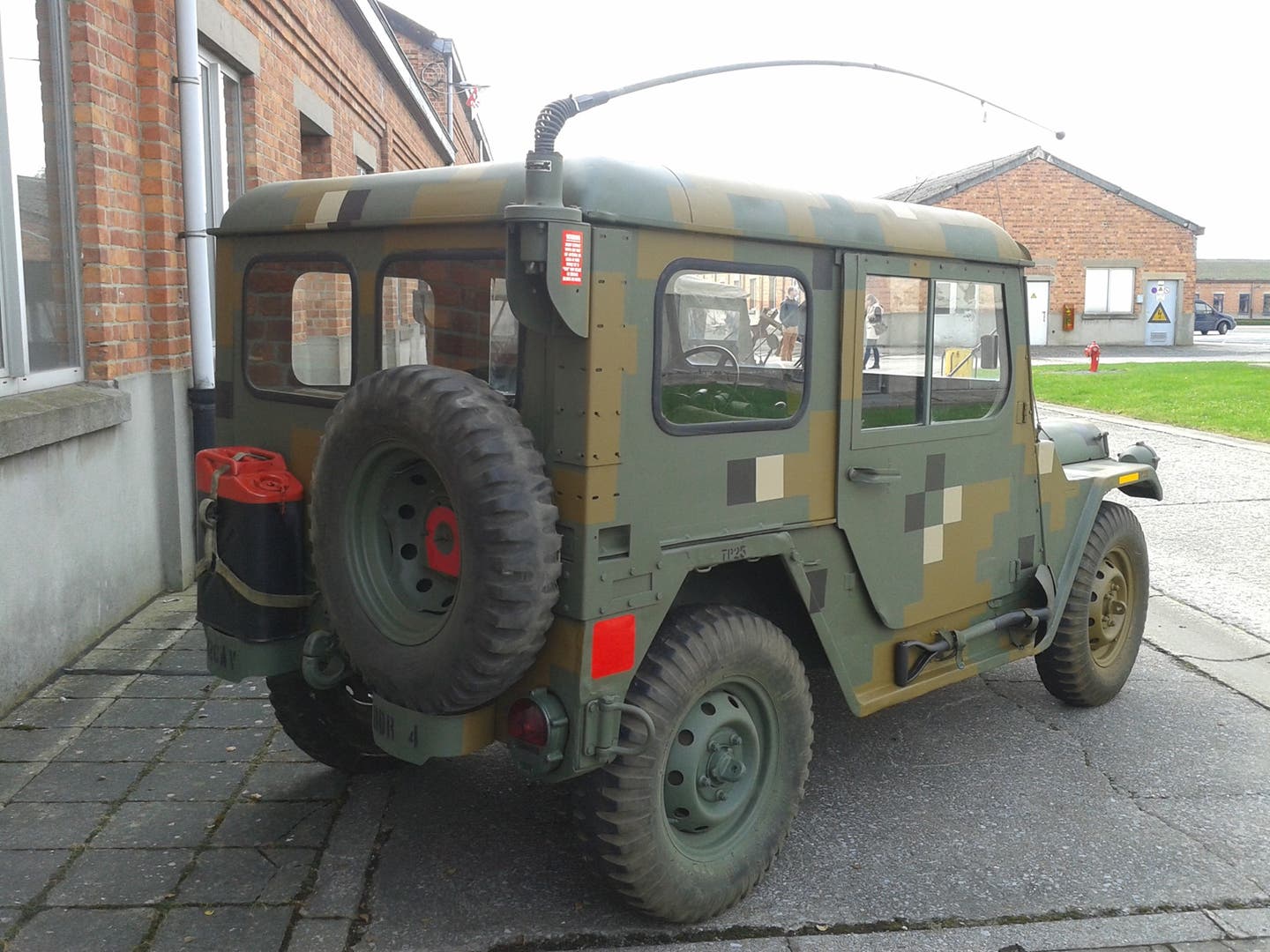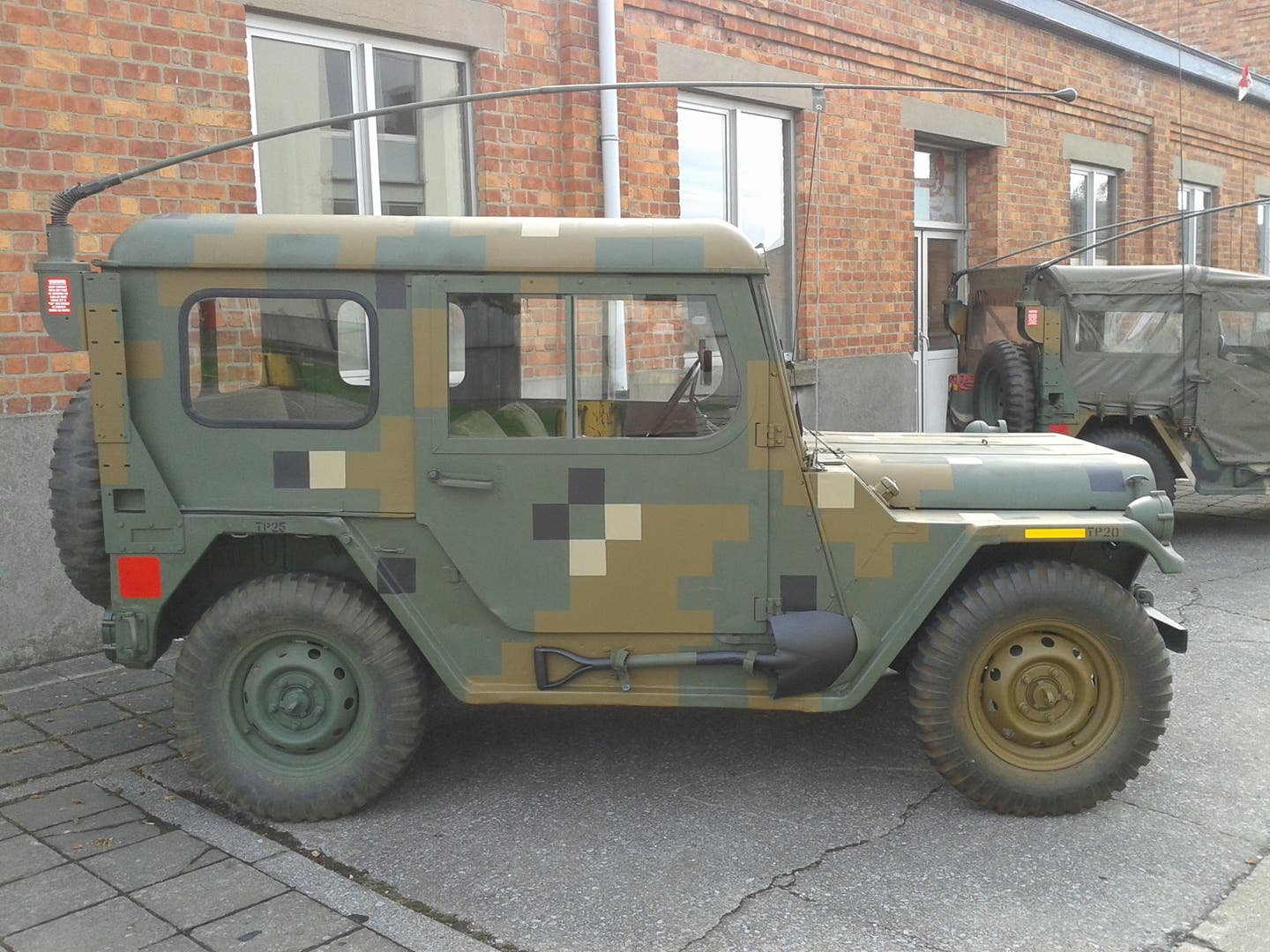US Army’s Dual Texture Gradient Camouflage
Anyone who spent time in Germany in the early 1980s and came in contact with units of the U.S. Army’s 2nd Armored Cavalry Regiment (ACR), will probably recall the odd looking “square” camouflage used on that unit’s vehicles. What was this odd pattern? Where did it come from? What happened to it?
Anyone who spent time in Germany in the early 1980s and came in contact with units of the U.S. Army’s 2nd Armored Cavalry Regiment (ACR), will probably recall the odd looking “square” camouflage used on that unit’s vehicles. What was this odd pattern? Where did it come from? What happened to it?
Officially, the pattern was called “Dual Texture Gradient” and was probably the first true “scientific” camo pattern used by the U.S. military. Historically, camouflage patterns used by the world’s militaries have more artistic roots. In the late 1880s, Abbot and Gerald Thayer began to study the natural disruptive patterns of animals and how they helped creatures avoid their predators. This formed the basis of early disruptive patterns which relied on the breakup of boundary features of an object, unfortunately, a disruptive pattern that might fool the eyesight of a lion, my make an object even more obvious to the detection by the human eye.
For most of WWI and WWII, camouflage design was done by artists and had varying ranges of success. With the advent of night vision in the 1950s and the advances in optics and fire control through the cold war era, many nations lost interest in camouflage patterns.
In the late 1960s with the US involved in the Vietnam War, camouflage research was revived. The U.S. Army’s Mobility Equipment Research and Development Center (MERDC) came up with a vehicular pattern that became the standard pattern from 1974 through the mid-1980s when it was phased out in favor of the NATO 3-color standard pattern.
THE DUAL TEXTURE CONCEPT
In 1976, Lieutenant Colonel Timothy R. O’Neill and West Point professor of engineering psychology applied human science to camouflage. He modified the basic MERDC pattern, keeping the large disruptive patterns of that scheme, but breaking them up further into 4” squares, in essence a camouflage pattern within a camouflage pattern, hence the name “Dual Texture” At distance, the larger pattern or “macropattern” is visible and would be indistinguishable from the standard MERDC pattern, at close range, or through the magnification of a gunners scope, the secondary “micropattern” emerges, the idea was to mimic nature, at a distance you see the tree, up close, the leaves. In his 1979 article in Armor, O’Neill compared the pattern to the art form called “pointillism.”
O’Neill wrote that the MERDC pattern relied too heavily on the application of “garnish,” such as netting and foliage to the vehicle. He theorized that in a rapid, mobile war, such “garnish” would rapidly be lost or destroyed. He sought to create a pattern that could stand alone.
TESTING THE CAMOUFLAGE PATTERN
The pattern went through a series of informal tests. One, done at West Point in 1977, involved 260 students. The subjects were asked to find pattern painted shapes in photographs taken at different distances. In this test, “Dual-Tex” fared well, it took, the students an average of 11.97 seconds to find the MERDC painted object, and 15.33 seconds to locate the Dual-Tex painted object.
A second test was conducted at Aberdeen Proving Ground in May 1977. This test employed a group of attack helicopter pilots and some artillery spotters from the 82nd Airborne Division. The men were placed in the commander’s station of a T-62 that had been acquired for the test. They were to use the tank’s TKN-3 sight to locate pattern painted M113s in the test area and then lay the gun on the target. It took the men an average of 22.32 seconds to find the MERDC painted vehicle and 40.35 seconds to locate the Dual-Tex painted M113.
Finally, in 1979, the pattern was adopted by the 2nd Armored Cavalry Regiment. The dual texture pattern went public.
HOW DUAL TEXTURE WAS APPLIED
Application of the pattern was varied. For the Aberdeen tests, a 4” roller was purchased at a local hardware store. Soldiers from the 2nd ACR report that sponges were cut into 4” squares, dipped in the paint and “blotted” on while others say they used cardboard with 4” holes cut in it and brushed away.
To date, the author has been unable to find an official “Dual-Tex” vehicle pattern, though t seems the Army used the MERDC pattern as a model and applied the paint in squares rather than broad strokes. In fact, in his works on dual texture, O’Neill indicates that the overall pattern is less important than the basic concept. Like many MERDC era paint jobs, they were unit-applied and usually “eyeballed” variation was the standard.
REMEMBERING THE CAMOUFLAGE: TALES FROM THE FIELD
There is a lot of lore surrounding Dual-Tex. Many 2nd ACR veterans attribute the pattern to the regiment's CO at the time, Colonel Robert E. Wagner. How the 2nd ACR came to use the pattern, whose idea it was and what channels approved it, seem to have been lost to time. During the time Col. Wagner was in command of the 2nd ACR, Dual-Tex was used by the regiment..
Col. Wagner went by the call sign “Dueler Six.” Some 2nd ACR soldiers say the pattern was nicknamed “Dueler Dots.”
The largest, and most consistent, myth behind Dual-Tex is the Soviet optics tale. Though the story is told in several forms, it basically goes like this:
The Soviets milled the optics in their tank sighting systems in such a way as to leave “lines” that formed a sort of invisible grid on the lens, this “grid” translated to 4” squares at 1,500 meters. Therefore, if a Soviet gunner looked at a U.S. tank painted in Dual-Tex, the 4” squares in the paint—meshed with the optic milling lines—and made it hard for the gunner to sight in on the target.
LTC O’Neill alludes to the fact that the squares were the result of computer modeling, and were a by-product of the limits of computer graphics at the time. This, of course, debunks this theory. This may have been the tale told to the regiment to hide the real experiment.
In the 1986-87 timeframe, the 2nd ACR switched from the M60 to the M1 tanks and Col. Wagner moved on. The 2nd ACR removed Dual-Tex from its vehicles to conform to the new NATO 3-color standard.
AFTERWORD: Pixelated Camo Patterns Considered
In 2004, the Canadian Military and the U.S. Marine Corps announce a new “digital” camouflage pattern. After years of research, the scientists agreed: The human eye has a hard time tracking “pixilated” patterns. The Marines were granted patent number 6805957 for their new pattern. The extensive patent documentation cites Col. O’Neill’s work and the Dual-Tex concept in depth. It seems that the good Colonel was years ahead of his time!





Editor's note: We are desperately seeking more photos of vehicles painted in Dual-Tex camouflage pattern. If you own one that you can share, please send a high-resolution photo to Military@aimmedia.com. We will update this article with new images and proper credit. Keep 'em rolling!
You may also enjoy
*As an Amazon Associate, Military Trader / Military Vehicles earns from qualifying purchases.
Chris Causley is a founding member and current president of the Michigan Military Technical & Historical Society in Eastpointe, Michigan. A long-time collector, historian, and vehicle restorer, he has narrowed his focus to capture and preserve the story of Michigan’s contributions to the defense of the nation from 1900 through today.








